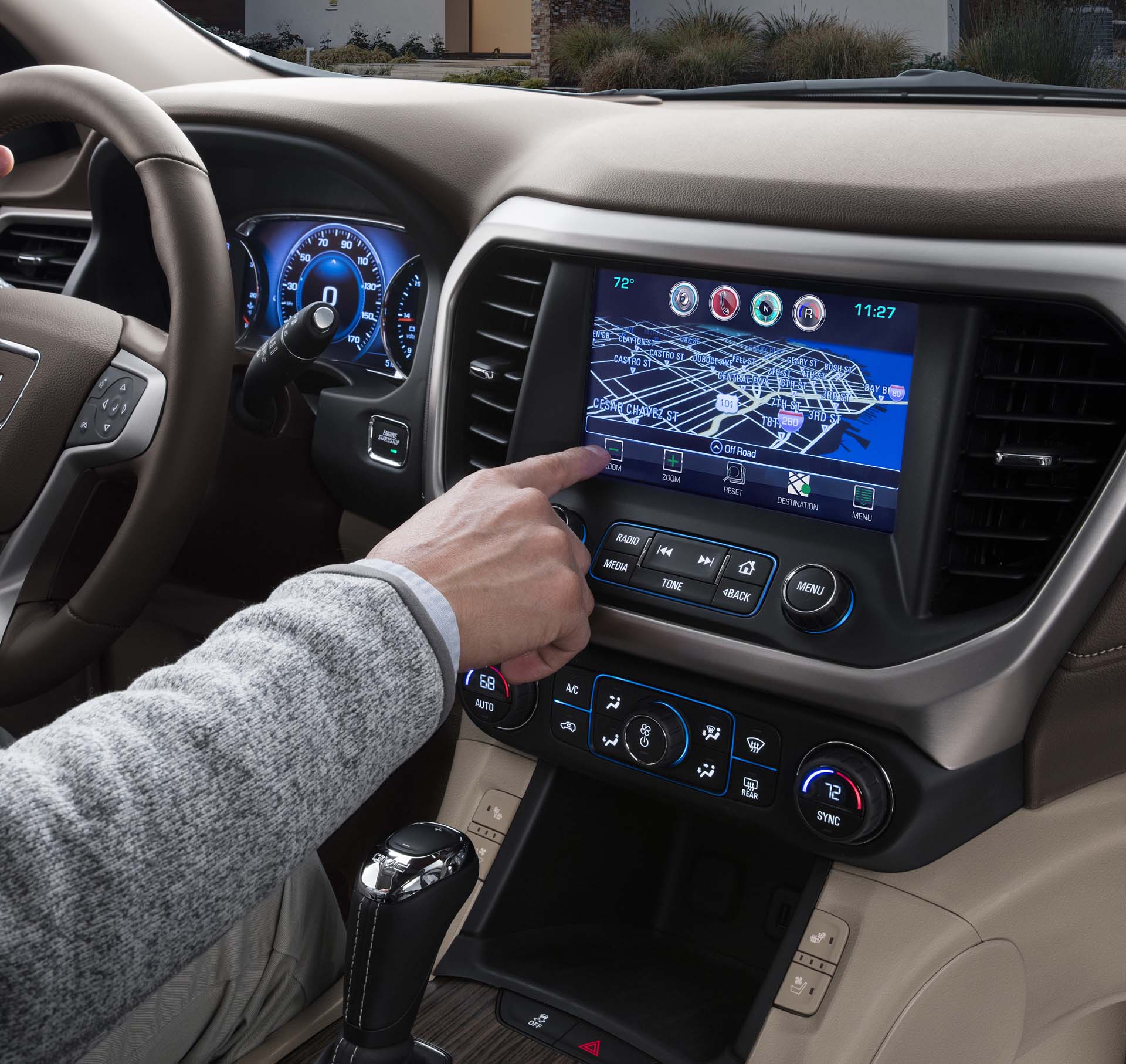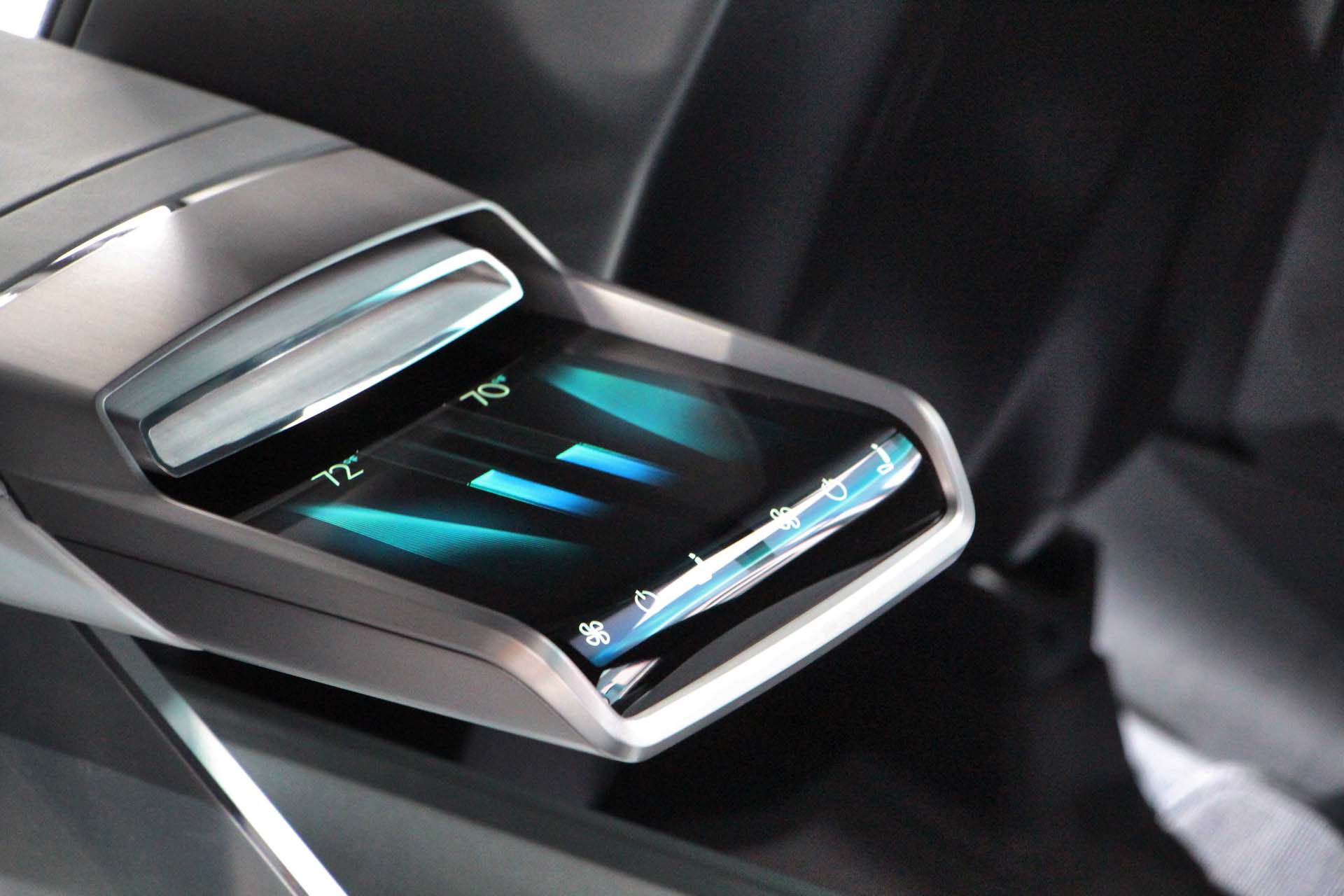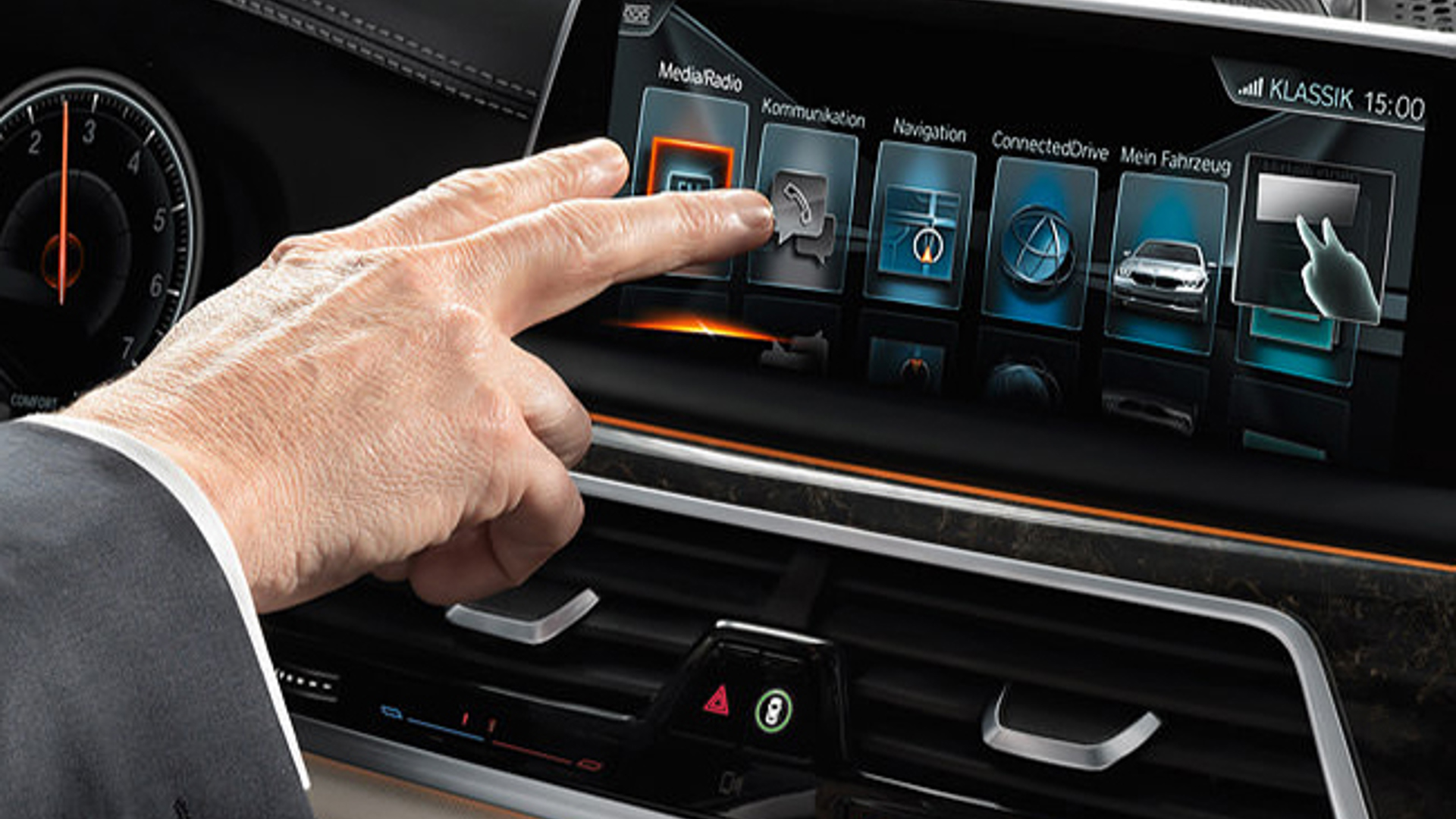With the rise of tech in cars finally starting to gain universal acceptance, and touch and voice responsive systems like Ford's Sync, Cadillac's CUE, BMW's iDrive, Apple CarPlay, and Android Auto are all making appearances in more and more vehicles every month. So what's next? Voice control is already common in a large number of cars, but it's frequently difficult to use and it can be frustrating to learn the commands and have the car understand you. Volkswagen and BMW have decided that the next step forward is using your hands to control the car. I know, that's how you already do it, but now you'll be able to control the infotainment by waving your fingers instead of pushing a real button.
This opens up a world of possibilities for automakers. Eliminate the physical controls and you greatly simplify centre stack and console design. One large screen is all you need. This will save them money, allow greater flexibility of design, and, by eliminating moving parts maybe even reduce frequency of repairs saving everyone more money and headache. Right now the two major movers toward this are Volkswagen, who revealed a production ready system at the 2016 Consumer Electronics Show, and BMW, who have gesture control available right now in the 7-series. So lets take a look at the two systems and see what gesture control has in-store.
 Touchscreens are so 2016...
Touchscreens are so 2016...
BMW, who really began the in-car human machine interface (HMI) revolution with their once hated now mostly praised iDrive system in 2001, has their AirTouch system currently in production. It wisely doesn't try to replace the iDrive controller and conventional buttons just yet. It works with a sensor mounted in the headliner to detect your hand and determine what you are trying to control.
They are also using predictive analysis to try and reduce the number of menu choices a gesture brings up, which can save you from the wall of menus that many infotainment systems currently offer. For example, making the "phone" gesture will bring up contacts or recent calls, not a generic menu with every single phone option. The system also gives you a confirmation button, to make sure the car does what you want. One is on the left side of the steering wheel, another on the passenger armrest. That makes sure you can press the button without moving your other hand back from the screen, then back to the screen to continue commands.
A better use of the system is letting you point at the menu option you want. A quick point followed by confirmation is more simple than knowing a secret handshake for the dozens of controls available in a modern car. That said, a swipe to answer or change music tracks, a thumb and pinky to go to the phone, and a twist of the wrist to turn up the volume are all fairly universal and simple for the user. But right now, that's about all you can do. The rest still requires a touch of a screen, dial, or button.

Volkswagen showed off their attempt at gesture control at CES in 2015 and 2016. Their full system functionality hasn't been revealed yet, but the two concept versions give a good idea as to what they think is possible. Again using a sensor mounted in the headliner, the VW system concept adds the ability to save your preset settings in order to either facilitate multiple drivers, or allow you to migrate your settings to other cars.
VW provides a 9.2-inch screen with the left side of the screen having a push button rotary switch (ie. a volume knob with push button) and four touch buttons, Home, Menu, Car, and App. The main screen has a large main area and two configurable "tiles" that can be assigned any of 10 functions, including album art or caller id. The 2015 Golf R Touch concept allowed gestures to control the sunroof, windows, and many other features, but the newer 2016 e-golf allowed for fewer options. Primarily, the gesture control is used for swiping for track changes or answering calls, but the big feature is that it will let you point at the menu options in order to select them. The VW system also has a "Hello, Volkswagen" command, similar to "Ok Siri" or "Ok Google" on your phone. The system looks to operate smoothly in demonstrations, but VW hasn't indicated when it could see production.

But in order for the tech to take hold, it has to be seamless. After all, when was the last time you turned a radio knob and had nothing happen? Plus the current move to touchscreens and voice control has been far from smooth, with manufacturers like BMW (for iDrive) and Ford (for MyFord Touch and early Sync) experiencing a large number of complaints over their tech, even suffering in initial quality scores because of it. Ideally, in order to really gain acceptance, all automakers would need to agree on what commands will do. Or at least easily allow reprogramming. The BMW 7-series control already uses swipe left to accept a call, right to reject, which goes against the established swipe right for yes, left for no that several apps have been using for some time. Relearning between your phone and your car is the kind of thing that can cause serious user frustration.
Gesture control is likely to start making appearances in every brand of car, much as touchscreen displays are now becoming universal. Expect two or three generations of it being painful before the systems really get reliable and user friendly. Hopefully they make the first gen software upgradable to make the transition a little bit easier.

